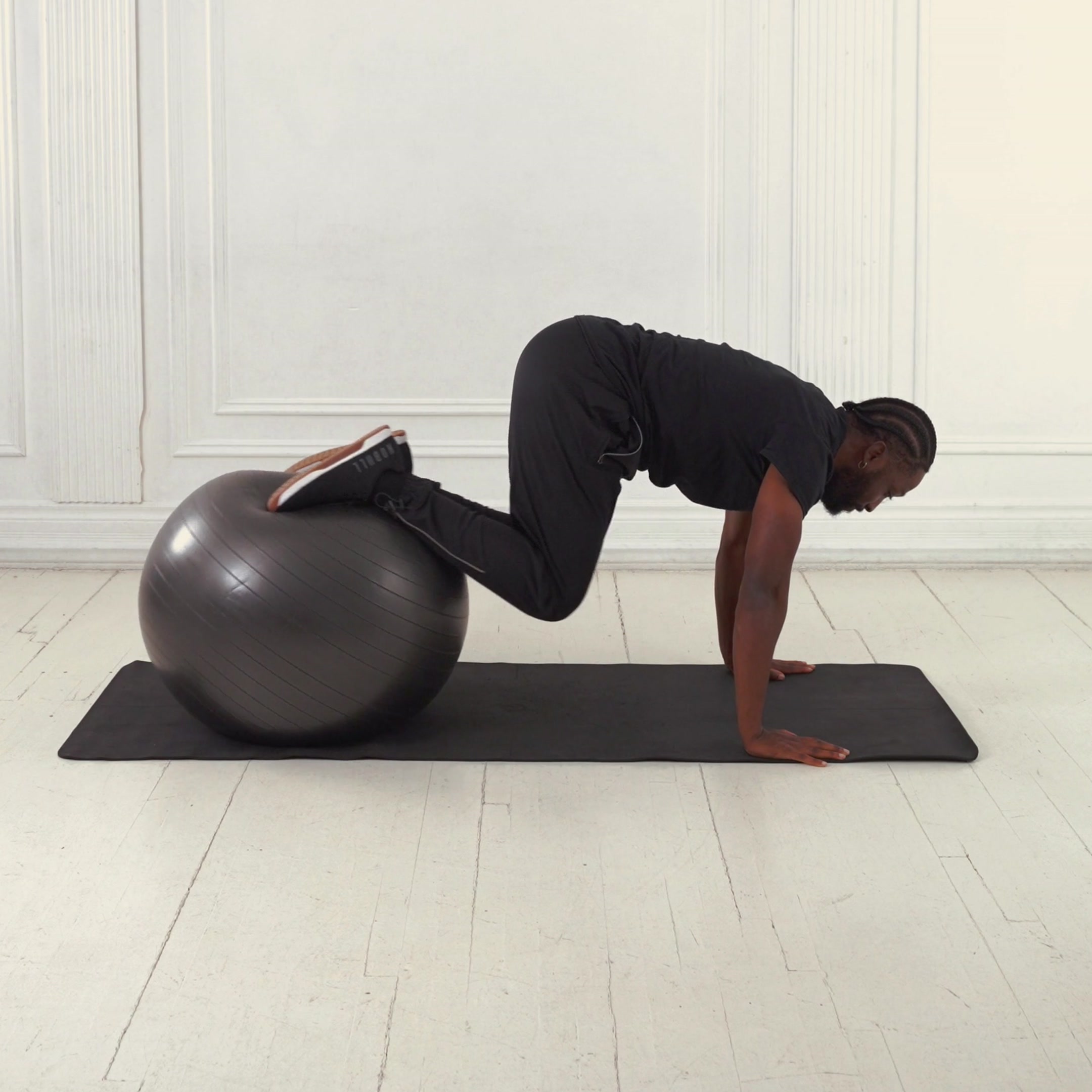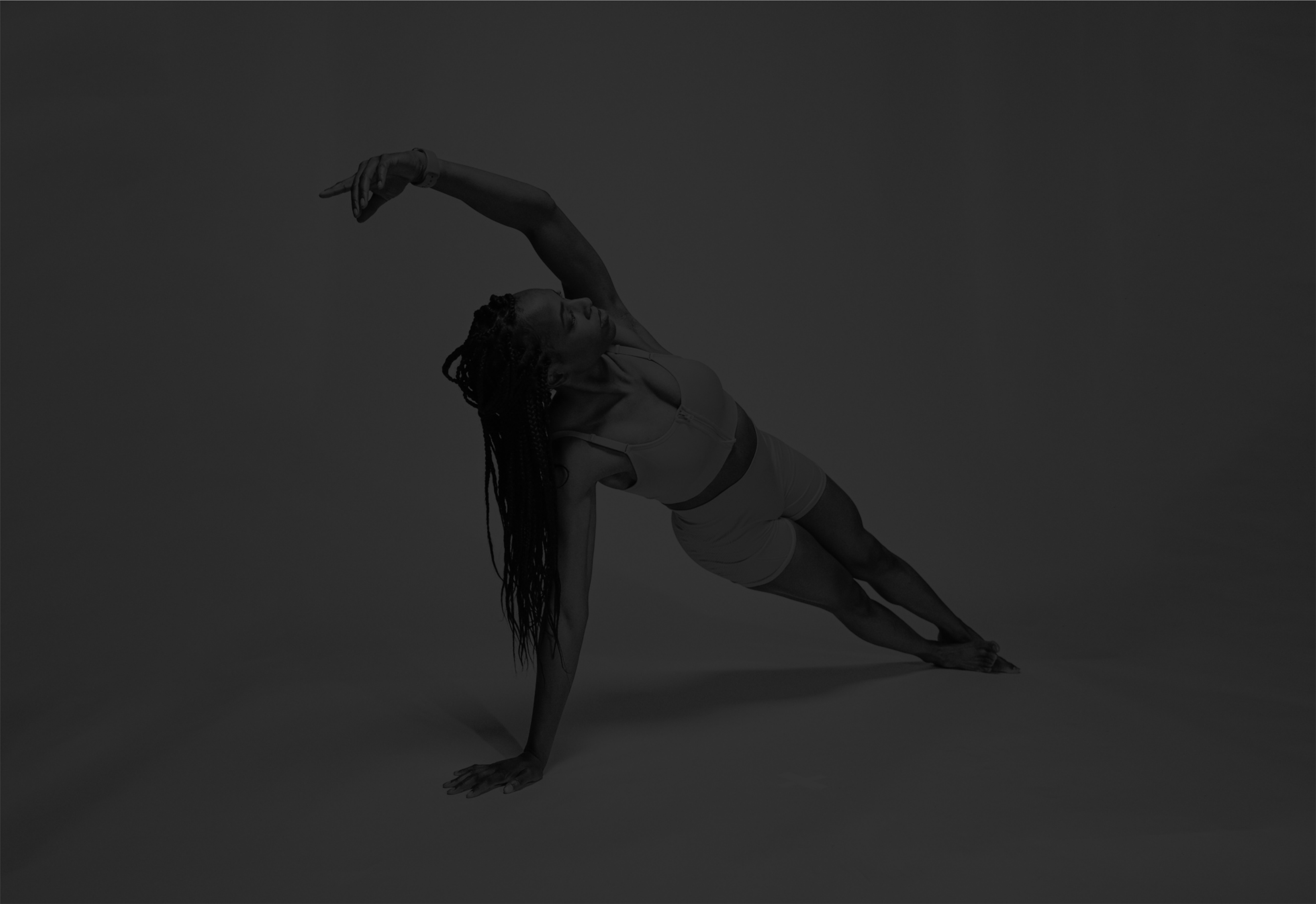Stability Ball Push-Up
A bodyweight push-up variation with feet on a stability ball that targets the chest, shoulders, triceps, and core to build upper body strength and stability through increased demand on balance and coordination.
About Exercise
Equipment
Stability Ball
Difficulty
4/5 • Intermediate
Primary Muscle Groups
Chest, Abs
Secondary Muscles
Obliques
Popularity Score
6
Goals
Training Style
Setup Requirements
Requires Rack
No
Requires Bench
No
Requires Spotter
No
Space Needed
Small
Noise Level
Low
Muscle Breakdown
View Muscle MapChest
9/10Upper Chest, Mid Chest
Abs
8/10Rectus Abdominis, Transverse Abdominis
Shoulders
7/10Anterior Delts
Triceps
6/10Lateral Head, Medial Head
Obliques
5/10External Obliques
Programming
Typical Rep Range
8-15 reps
Rest Between Sets
60-120 seconds
How to Perform
Kneel in front of a stability ball and place hands on the floor shoulder-width apart. Position feet or shins on the ball and walk hands forward to form a straight body line from head to heels in a high plank.
- Inhale and bend elbows to lower chest toward floor, keeping elbows at 45 degrees.
- Maintain straight body line with engaged core and glutes throughout descent.
- Exhale and press through palms to extend arms and return to starting position.
- Keep head neutral and avoid locking elbows at the top.
- Repeat for prescribed reps while controlling the ball's instability.
Coaching Tips
Form Cues
- Body straight as a board
- Elbows tucked at 45 degrees
- Core tight, hips square
- Press evenly through both hands
- Gaze slightly forward
Breathing
Inhale during the lowering phase and exhale forcefully as you push up, bracing your core on every rep.
Tempo
3-1-1
Range of Motion
Lower until chest is just above the floor with elbows at 90 degrees; extend arms fully without locking elbows.
Safety
Safety Notes
- Master standard push-ups first
- Use a properly inflated ball
- Avoid if shoulder or wrist injuries present
- Stop if lower back rounds
- Wider foot stance for stability
Spotting
No spotter needed; use a wall or partner to stabilize the ball if beginner.
Common Mistakes
- Sagging hips or arched back
- Flaring elbows wide
- Bouncing off the floor
- Shifting weight unevenly on the ball
- Neck straining upward
When to Avoid
- Acute shoulder impingement
- Lower back instability
- Wrist injuries
Flexibility Needed
- Full shoulder flexion
- Ankle dorsiflexion for plank
Build Up First
- Proficiency in standard push-ups
- Basic plank hold competency
Also known as
Swiss Ball Push-Up, Exercise Ball Push-Up, Decline Ball Push-Up, Feet Elevated Stability Push-Up
Found this helpful?
Share your thoughts or help us improve this guide.
Similar Exercises

Stability Ball Atomic Push-Up
Stability Ball
Chest

Stability Ball V-Up
Stability Ball
Abs

Stability Ball Pike
Stability Ball
Abs

Stability Ball Plank
Stability Ball
Abs

Stability Ball Pike Push-Up
Stability Ball
Shoulders

Stability Ball Rollout
Stability Ball
Abs

Stability Ball Jackknife Sit-Up
Stability Ball
Abs

Stability Ball Ab Rollout
Stability Ball
Abs

Stability Ball Sprinters
Stability Ball
Abs

Stability Ball Stir The Pot
Stability Ball
Abs


subscribe to our newsletter
Contact Us
hello@trainfitness.aiFind Us
130 Spadina Avenue, Toronto,
Ontario, M5V 0H4, Canada
©2025 All Rights Reserved
